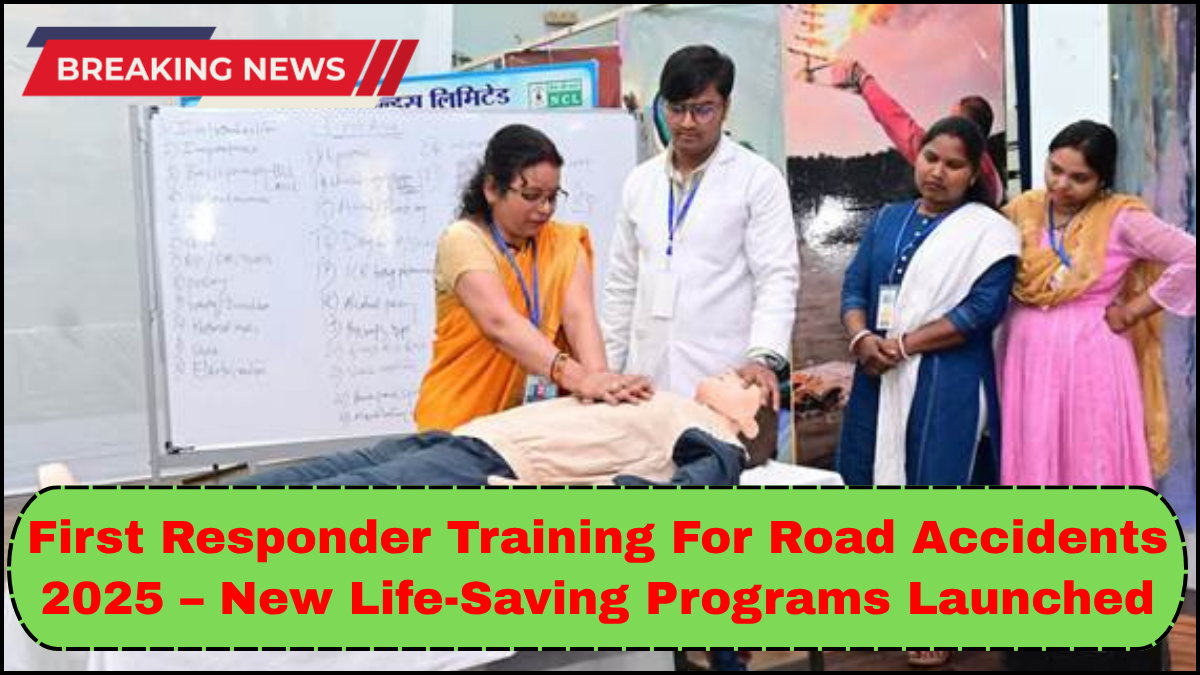Road accidents continue to be one of the leading causes of preventable deaths worldwide. In response to this ongoing crisis, first responder training for road accidents 2025 has undergone a major overhaul. With innovative methods, advanced technologies, and a broader skill set for trainees, the new programs are designed to significantly improve survival rates and reduce the long-term impact of crash-related injuries.

A New Era in First Responder Training
The 2025 update to first responder training is not just a revision—it’s a transformation. These new programs go beyond the basics of CPR and first aid. They are engineered to produce highly capable individuals who can think fast, act effectively, and work in high-stress scenarios where seconds make the difference between life and death.
Key features include:
- Simulated accident scenarios using VR and AR for realistic, hands-on training
- Psychological readiness modules to help responders manage stress and make critical decisions
- Expanded paramedic skills training including advanced airway management and trauma care
- Inter-agency coordination exercises for seamless cooperation between police, fire, and emergency medical teams
Integration of Cutting-Edge Technology
Technology plays a central role in modern emergency care. The 2025 programs incorporate the latest tools to ensure trainees are prepared for real-world situations:
- Virtual Reality (VR) immerses trainees in crash sites, helping them assess injuries and environmental risks under pressure.
- Wearable biometric sensors monitor heart rate, stress levels, and response times during drills.
- Drone deployment simulations teach first responders how to utilize aerial support for assessing accident scenes and delivering medical supplies.
This tech-driven approach enables responders to build muscle memory, refine decision-making, and respond with confidence when every second counts.
Comprehensive Emergency Care Curriculum
The updated curriculum covers a wide range of emergency care techniques, ensuring first responders are equipped to handle complex accident scenarios. Modules now include:
- Spinal immobilization and extraction techniques
- Bleeding control with hemostatic agents and tourniquets
- Burn management and shock prevention
- Pediatric and geriatric care adjustments
Additionally, responders are trained to stabilize victims until advanced medical teams arrive, bridging the critical gap between accident and hospital care.
Paramedic Skills: More Than Just Medical Aid
Modern first responders are expected to operate with the skillset of frontline paramedics. The new training emphasizes:
- Advanced life support protocols
- ECG monitoring and basic interpretation
- Medication administration under remote physician guidance
- Airway insertion devices and bag-valve-mask ventilation
With these paramedic skills, first responders can provide high-quality care even in remote areas or when ambulances are delayed.
Nationwide Certification and Community Programs
To broaden the reach and impact of these life-saving techniques, many countries are implementing nationwide certifications. Community-based training initiatives are also gaining traction, encouraging civilians to get involved and become certified emergency responders.
These programs empower drivers, passengers, and bystanders to act immediately while professional help is en route. In 2025, saving lives isn’t just the job of paramedics—it’s a shared responsibility.
The Road Ahead: Collaboration and Continuous Learning
The future of first responder training hinges on continuous improvement. Programs now include:
- Ongoing skill assessments every 6 months
- Access to online refresher courses
- National emergency care databases to track best practices and outcomes
By focusing on collaboration, innovation, and adaptability, first responder training for road accidents 2025 aims to set new global benchmarks for pre-hospital care.
FAQs
Q1: Who can enroll in the new first responder training for road accidents 2025?
A: The program is open to firefighters, EMTs, police officers, and approved civilians with a clean background and a basic understanding of emergency procedures.
Q2: What is the duration of the updated training course?
A: The full training typically spans 6 to 8 weeks, including online modules, hands-on sessions, and final assessments.
Q3: Is certification internationally recognized?
A: Many programs are aligned with WHO and Red Cross standards, making them valid in multiple countries.
Q4: Are civilians trained in paramedic skills too?
A: Civilians receive foundational paramedic skills focused on stabilization and basic emergency care, while professionals get advanced training.
Q5: How do I find a certified training center?
A: Local health departments and emergency services websites often list approved training centers offering the 2025 curriculum.
click here to learn more